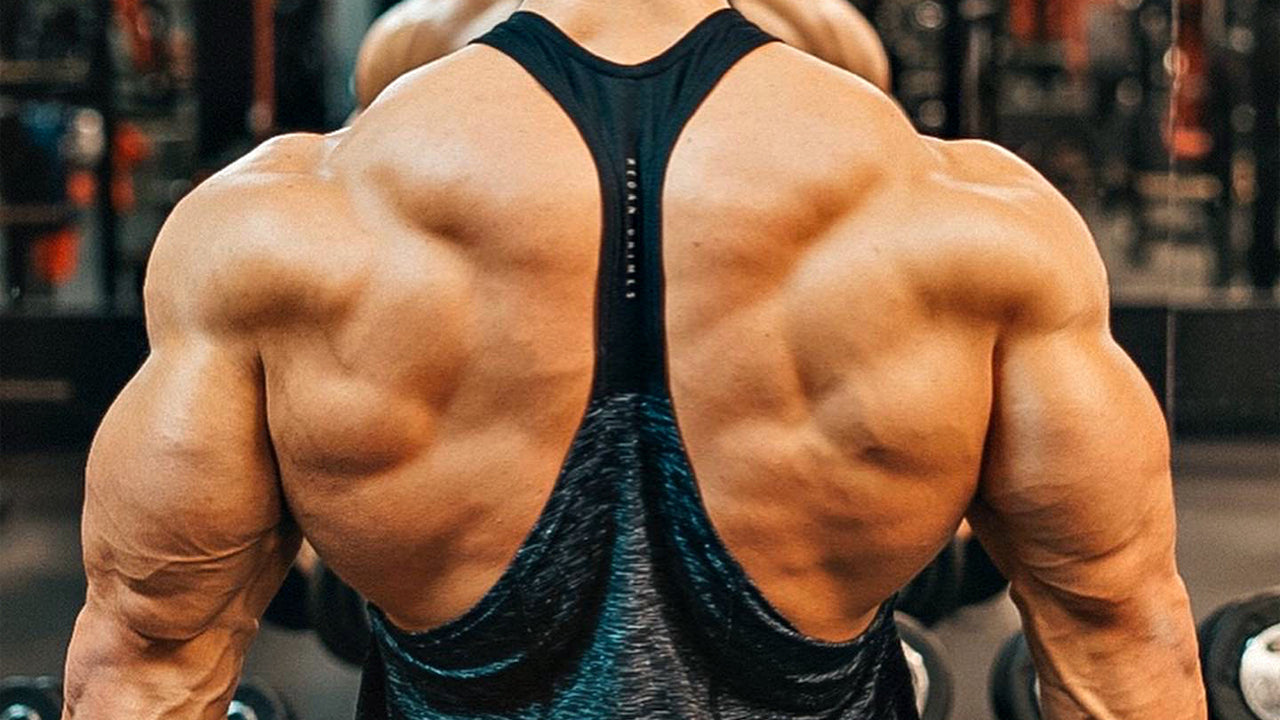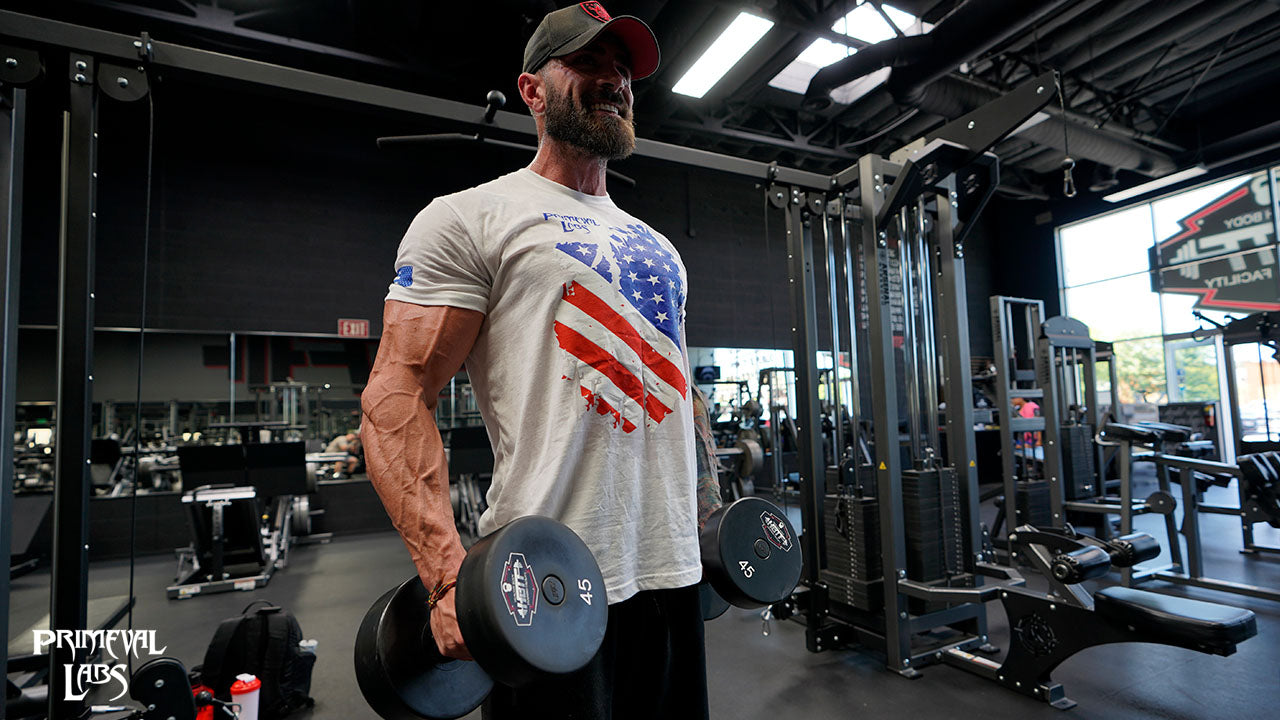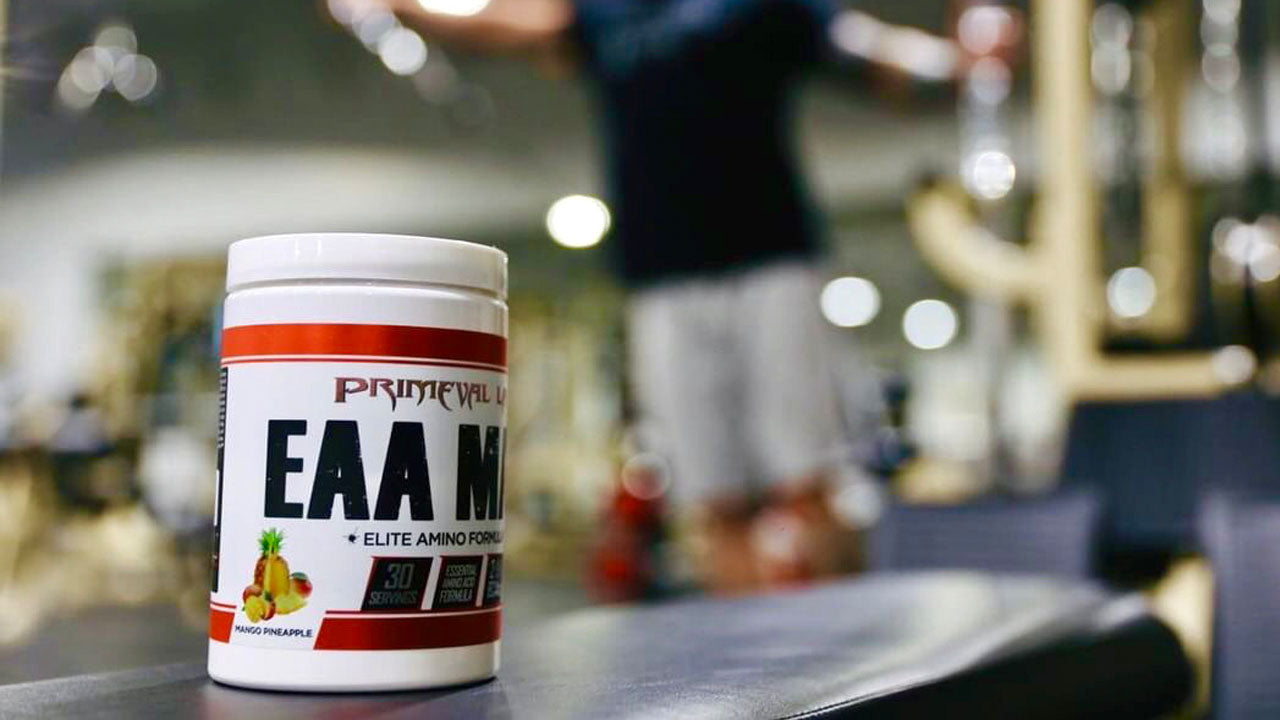If you want to know the best lat workouts to build a stronger, wider back, then you'll want to read this article.
Back development is an area where many lifters struggle, whether it be due to a lack of training entirely, or not getting the most muscle-building bang from each rep.
That’s where this guide comes in.
We’ve assembled a complete guide of tips, tricks, and exercises to give you the best lat workout ever for a bigger, wider back and help you achieve that “V-Taper.”
Let’s first start by discussing the structure and functions of the lats.
Lat Anatomy 101
The latissimus dorsi, a.k.a. the lats, are a large fan-shaped muscle that originates from the humerus (upper arm bone) and attaches to the scapula (shoulder blade), thoracolumbar fascia, and lower thoracic spine (T-Spine).
Given the many attachments of the muscle, it comes as no surprise, that the lats are the largest single muscle in the body, spanning a considerable portion of your back, which makes them priority #1 if you want to get your “wings” and have a wide, muscular back.
The lats are responsible for extension, adduction, and medial rotation of the shoulder. Basically, any upper body exercise that entails raising the arms, lowering them, or moving them closer to your midline involves the lats.
But that’s not all.
The lats also help stabilize the spine during pulling (i.e. deadlifts) and squatting movements. And, they even assist in stabilizing the torso during upper body exercises, including the bench press, incline press, and overhead press.
3 Keys to Great Lat Workouts
Building big lats isn’t as simple as knocking out a bunch of sloppy lat pulldowns at the gym one or two times per week. To fully stimulate the lats, you need to be cognizant of how you are performing the exercises.
Anyone can walk into the gym and perform a bunch of sloppy reps, kipping their body and heaving the weight to and fro, but these individuals will likely never realize the full muscle-building potential of their workouts.
If you’ve been struggling to see substantial results from your back workouts, keep these tips in mind the next time you hit the gym.
1. Pull with the Back, Not the Arms
By far the most common mistake people make with lat exercises is letting their arms do all the work, which causes two problems.
First, your biceps are a substantially smaller muscle group than the lats, which means they will fatigue much quicker than the lats, limiting how many reps you can perform or how much weight you can actually lift.
Second, the biceps also fatigue much quicker than the lats, which (again) limits how much weight you can move or how many reps you can knock out before fatiguing.
Pulling with the arms (instead of the back) is typically done with any type of chin up, pull up, pulldown, or row.
The simple way to fix this is to keep in mind two important queues as you lift the weight.
First, instead of gripping the dumbbell, bar, or cable attachment with an iron-clad grip, loosen up your grip and use an open (false) grip where your thumb is lined up with the rest of your fingers.
Second, rather than focusing on initiating the lift with your arms, focus on leading the pull with your elbows. Really concentrate on driving them behind you and putting them in your back pocket. This also helps eliminate any shoulder shrugging and also improves scapular retraction and depression.
It might also help to think of your hands and arms as hooks that are only holding onto the weights but not doing any of the work.
2. Elbow Position
The back is made up of many different muscle groups.
What this means is that the angle at which you pull the weight up can significantly impact which portion of the back musculature you’re stimulating the most.
For instance, when you perform a row with your elbows flared out to your sides, you emphasize more of the rear delts, rhomboids, and other musculature of the upper back.
Performing a row with the elbow tucked close to your torso stimulates the lats to a greater degree.
3. Grip Width
Building on the previous point, not only does elbow position matter during your lat workout but so too does the width of your grip.
Using a supinated (underhand) or reverse grip will typically keep the arm closer to the body, which tends to emphasize the lats more. A neutral grip will usually do the same, but has the added benefit of hitting the teres also.
Conversely, a pronated (overhand) grip usually hits the muscles of the upper back (rhomboids, rear delts, etc.) because it lends itself to a more flared (elbows out) arm path.
Additionally, using a close grip or shoulder-width grip is generally better for targeting the lats. Wider grips can cause greater abduction of the humerus which means they’ll emphasize the upper back muscles a bit more.
Keep this in mind when selecting what grip you want to use on pull-ups, chin-ups, and pull-downs.
7 Exercises That Belong in the Best Lat Workouts
1. Chin-Ups
The chin-up is considered by many as one of the best lat workouts ever.
Chin-ups can also be progressed in many ways to make them more challenging, though we think you’ll find that performing full range of motion chin-ups to be pretty darn demanding.
Due to the supinated (underhand) grip, chin-ups emphasize the lower lats, while wide grip pull ups focus more on the outer lats and teres major.
If bodyweight chins are becoming too easy, try incorporating pauses at the top or middle positions of the movement. You can also vary your grip width to emphasize different areas of the lats as well as add external loading in the form of hanging plates from your waist.
Common mistakes made when performing chin-ups (as well as pull-ups):
- Pulling with the upper arms instead of the lats
- Not lowering all the way down to the bottom
- Not pulling yourself up all the way
- “Bouncing” reps -- using momentum at the bottom of the rep to slingshot yourself back up...do this enough times and you’re right in line for a shoulder injury
- Not keeping your core and lower body tight
2. Pull Ups
Pull-ups are another top-tier lat building exercise, but due to the pronated grip required of the lift, they’re not the most joint-friendly exercise for lifters with cranky shoulders.
However, if you don’t experience any pain in your shoulders using a pronated grip, feel free to rotate between pull-ups and chin-ups in your lat workout routines.
Both are phenomenal upper body exercises and will complement your back training.
All the same tips hold true for pull-ups that we just listed above for chin-ups.
3. Lat Pulldowns
For those who aren’t able to bang out multi-rep sets of chin-ups or pull-ups or for those looking to increase their overall lat training volume, a lat pulldown is an excellent option for training the vertical pulling pattern.
The main difference here is that instead of pulling your body to the bar, you’re pulling the bar down to your body. And, since you don’t need to be concerned with maintaining a tight lower body, you can really devote all of your focus to blasting the lats for both high and low rep sets.
A few things to keep in mind when performing the exercise:
- Don’t lean back too far when performing the pull as this changes the angle of force and turns it more into a high row than a vertical pull.
- Slowly “resist” the bar up on every rep, don’t let the weight stack do all of the work.
- At the bottom of each rep, squeeze the lats as hard as you can before slowly raising the bar back to the top.
- At the top, allow for a full and complete stretch on the lats -- no half-reps here!
- Use a reverse grip or neutral grip as it helps keep the elbows closer to the torso, thus working the lats more.
4. Straight-Arm Pulldowns
One of the best exercises for developing the lats (and improving performance in the deadlift) is the straight-arm pulldown.
The reason for this is that the straight-arm pulldown captures the function of the lats perfectly.
If you recall from our anatomy discussion of the lats, their primary function is to bring the humerus (upper arm bone) down and back, which is exactly what you're doing during the straight-arm pulldown.
A few things to keep in mind during the movement are to maintain a slight bend in your elbows and keep your torso angle constant. At the top of the movement, you should feel an intense stretch in your lats, and at the bottom, maintain a “proud” chest position to ensure complete contraction of the lats.
This exercise can serve as a great warm-up or activation movement before your heavier compound lat exercises (pull-ups, chin-ups, etc.) or as a finisher to blast your lats at the end of your workout.
5. 1-Arm Dumbbell Row
If you want an impressive back, you need to perform rows. There are no two ways about it.
And, there are a TON of rowing variations to hit every portion of the back.
Our preferred free weight row variation is the single-arm dumbbell row.
The reason for this is that you can really focus on working one side of your body at a time, and there is less strain on the lower back due to the fact you can stabilize with your other arm.
Furthermore, training one arm at a time allows you to get the arm back further behind your torso, allowing for a greater range of motion compared to if you tried to pull with both arms back simultaneously.
6. 1-Arm Cable Row
As much as we love the dumbbell row for building a strong back, the cable row just might be a better option.
The added benefit of cables is that they provide constant tension on the lats throughout the entire range of motion. With dumbbell rows, the initial pull is very easy and the top portion is very hard.
Furthermore, cables also place a greater stretch on the lats that is virtually nonexistent with certain other row variations, allowing for eccentric overload and the ability to perform forced eccentrics after reaching concentric failure.
As with the dumbbell row, elbow position will determine which aspect of the back musculature you’re “targeting.” Keeping the elbow close to the body while pulling down and back focuses more on the lats while pulling out to the side and allowing the elbow to drive away from the body emphasizes more of the rhomboids and rear delts.
7. Reverse Grip Inverted Row
If banging out multiple reps of bodyweight chin-ups or pull-ups is too challenging, the next best option is to perform the inverted row, alternatively referred to as Bodyweight rows or Australian pull-ups.
Similar to other back exercises, how you grip the bar will determine which area of the back you emphasize during the movement.
As we mentioned above, using a supinated grip keeps the arms closer to the sides of your body which allows for greater emphasis to be placed on the lats. Using a wide and/or pronated grip focuses more on the rhomboids and rear delts.
(Note: The lats will still get worked to some degree, but not as much as if you were to perform the movement with an underhand or supinated grip).
The reverse-grip inverted row can also be scaled up or down depending on your strength levels. To make the move more challenging, elevate your feet on a bench or box and/or incorporate pauses at the top or midpoint of the exercise. To make it easier, you can raise the bar higher or bend your knees and plant your heels into the floor (instead of maintaining a straight line from head to toe).
The Best Lat Workouts
|
Best Lat Workout #1 |
||
|
Exercise |
Sets |
Reps |
|
Straight-Arm Pulldown |
3 |
12-15 |
|
Chin-ups |
3 |
8-10 |
|
Standing 1-Arm Cable Rows |
3 |
10-12 |
|
Lat Pulldown* |
1 |
50 reps |
*Note: You will perform one set of 100 reps. Obviously, you won’t be able to perform all 100 reps right out of the gate. If you can, you didn’t pick a heavy enough weight. Select a weight that you can perform for 15-20 reps and when you are 1-2 reps from failure, stop and take a 10-20 second break then perform another mini-set. Keep performing these rest-pause mini-sets until all 50 reps are completed and your lats are screaming.
|
Best Lat Workout #2 |
||
|
Exercise |
Sets |
Reps |
|
Weighted Chin-Ups |
3 |
5 |
|
1-Arm Dumbbell Rows |
3 |
8-10 |
|
Lat Pulldown |
3 |
10-12 |
|
Reverse Grip Inverted Row* |
1 |
50 reps |
*Note: Perform one set of 50 reps using the rest-pause technique
|
Best Lat Workout #3 |
||
|
Exercise |
Sets |
Reps |
|
Rack Pulls |
5 |
5 |
|
Seated Close-Grip Cable Rows |
3 |
8-10 |
|
Bodyweight Chin Ups |
3 |
AMRAP |
|
Straight-Arm Pulldown |
1 |
100 reps |
*Note: Perform one set of 100 reps using the rest-pause technique














Leave a comment
This site is protected by hCaptcha and the hCaptcha Privacy Policy and Terms of Service apply.